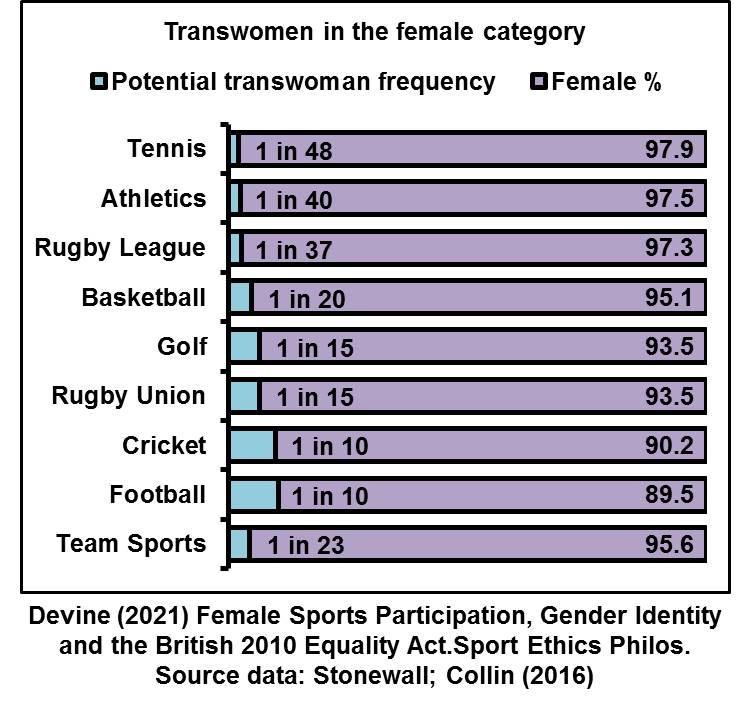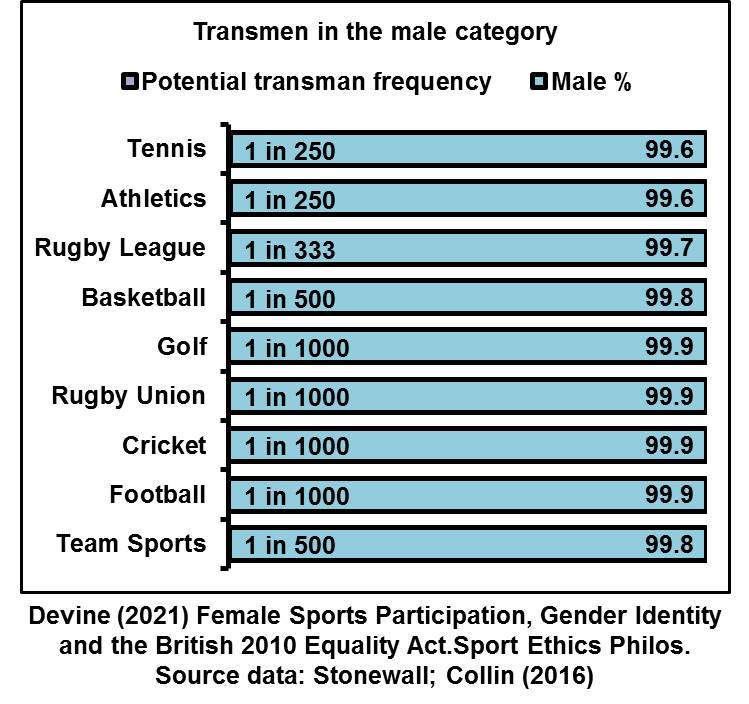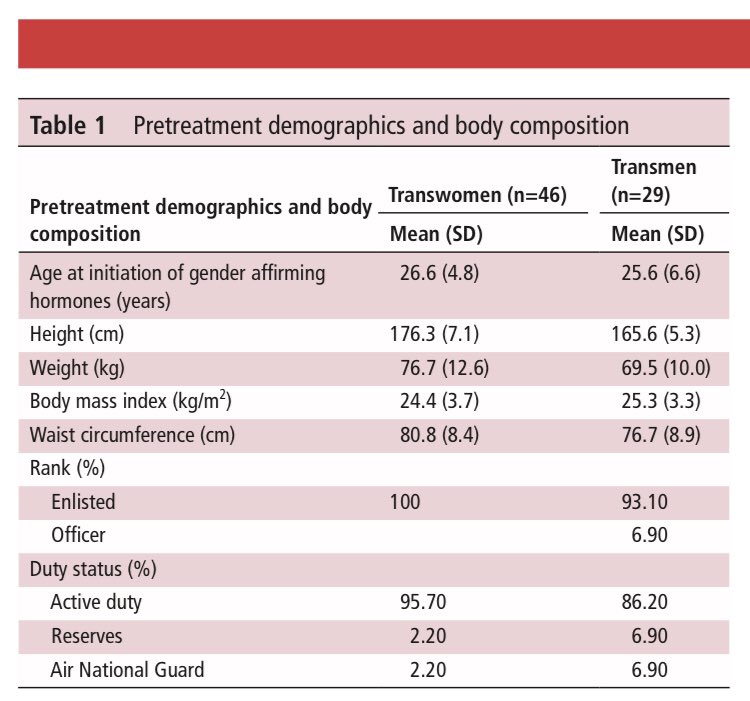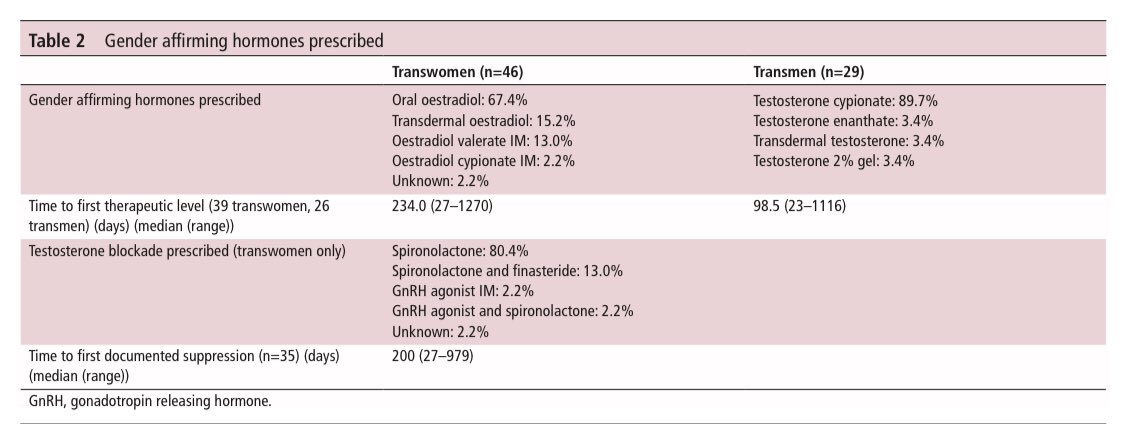Authors Emma Hilton
7 days
30 days
All time
Recent
Popular
With Cathy's permission, I have converted the stats from this paper into graphic form.
Read on.
First, Cathy reported the numbers and % split of UK males and females playing selected sports. Male participation is higher than female participation.

Then, Cathy used population estimates to predict the numbers of male and female athletes who would be eligible, under a selfID model, for the opposite sex category. Cathy calculated these trans athletes as % of opposite sex category.
I have calculated the trans athletes as a frequency in the opposite sex category.
Here is the data for transwomen in female sports.

Here is the data for transmen in male sports.

Read on.
Delighted my research article Female Sports Participation, Gender Identity and the British 2010 Equality Act is now published in Sport Ethics and Philosophy. 1/https://t.co/wNPz2sd2WD
— Cathy Devine (@cathydevine56) November 9, 2021
First, Cathy reported the numbers and % split of UK males and females playing selected sports. Male participation is higher than female participation.

Then, Cathy used population estimates to predict the numbers of male and female athletes who would be eligible, under a selfID model, for the opposite sex category. Cathy calculated these trans athletes as % of opposite sex category.
I have calculated the trans athletes as a frequency in the opposite sex category.
Here is the data for transwomen in female sports.

Here is the data for transmen in male sports.

@Hogshead3Au @BARBARABULL11 @boysvswomen @cbrennansports @Martina @devarona64 OK.
Fitness data from over 85k AUS children aged 9–17 yrs showed that, compared with 9 yr females, 9 yr males were 9.8% faster in sprints, 16.6% faster over 1 mile, could jump 9.5% further, could complete 33% more push-ups in 30 s and had 13.8% stronger grip.
@BARBARABULL11 @boysvswomen @cbrennansports @Martina @devarona64 Here is my full description of that data.
Example:
1.6km timed run (CV endurance)
The *best* 17 yr old girls are matched by *average* 17 yr old boys, and beaten, by some measure, by the best 9 yr old
@BARBARABULL11 @boysvswomen @cbrennansports @Martina @devarona64 Male advantage of a similar magnitude was detected in a study of Greek children, where, compared with 6-year-old females, 6-year-old males completed 16.6% more shuttle runs in a given time and could jump 9.7% further from a standing
@BARBARABULL11 @boysvswomen @cbrennansports @Martina @devarona64 In terms of aerobic capacity, 6- to 7-year-old males have been shown to have a higher absolute and relative (to body mass) VO2max than 6- to 7-year-old
@BARBARABULL11 @boysvswomen @cbrennansports @Martina @devarona64 Pre-puberty performance differences are not negligible, and could be mediated, to some extent, by genetic factors and/or activation of the hypothalamic–pituitary–gonadal axis during the neonatal period, sometimes referred to as “minipuberty”.
Fitness data from over 85k AUS children aged 9–17 yrs showed that, compared with 9 yr females, 9 yr males were 9.8% faster in sprints, 16.6% faster over 1 mile, could jump 9.5% further, could complete 33% more push-ups in 30 s and had 13.8% stronger grip.
@BARBARABULL11 @boysvswomen @cbrennansports @Martina @devarona64 Here is my full description of that data.
Example:
1.6km timed run (CV endurance)
The *best* 17 yr old girls are matched by *average* 17 yr old boys, and beaten, by some measure, by the best 9 yr old
Here is summary data from Catley and Tomkinson, 2012, who collated performance data from 85347 Australian schoolchildren aged 9-17 years old. pic.twitter.com/qKdxqywpoq
— Emma Hilton (@FondOfBeetles) November 19, 2020
@BARBARABULL11 @boysvswomen @cbrennansports @Martina @devarona64 Male advantage of a similar magnitude was detected in a study of Greek children, where, compared with 6-year-old females, 6-year-old males completed 16.6% more shuttle runs in a given time and could jump 9.7% further from a standing
@BARBARABULL11 @boysvswomen @cbrennansports @Martina @devarona64 In terms of aerobic capacity, 6- to 7-year-old males have been shown to have a higher absolute and relative (to body mass) VO2max than 6- to 7-year-old
@BARBARABULL11 @boysvswomen @cbrennansports @Martina @devarona64 Pre-puberty performance differences are not negligible, and could be mediated, to some extent, by genetic factors and/or activation of the hypothalamic–pituitary–gonadal axis during the neonatal period, sometimes referred to as “minipuberty”.





